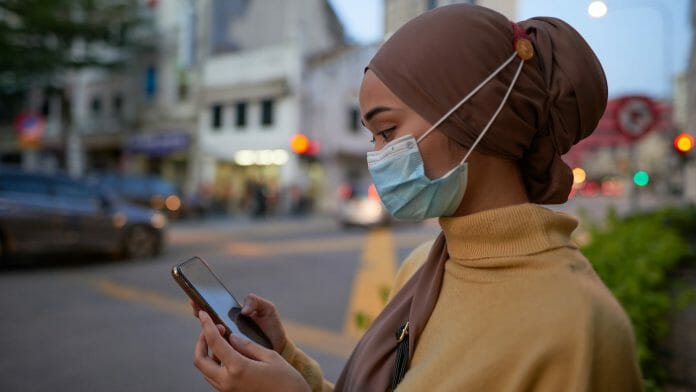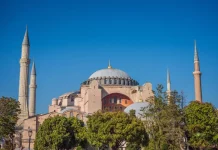Malaysia has gained popularity as a healthcare and wellness destination of the past number of years. The growth and progress of the industry is to a large extent, attributed to Malaysia’s healthcare proposition of world-class quality, ease of accessibility and comparative affordability.
Statistics from the Malaysia Healthcare Travel Council shows that healthcare travelers from Indonesia form approximately 60 percent of total arrivals, with arrivals from other countries include Myanmar, Australia, Bangladesh, Brunei, Cambodia, India, Japan, Vietnam, and Philippines among others.
That being said, the country’s healthcare attractiveness is also accentuated by other factors. These include the country’s position as a well-governed healthcare destination dedicated to patient safety, our strategic position as a Muslim-friendly nation, our many travel sights and a multilingual healthcare system.
BusinessToday speaks to Malaysia Healthcare Travel Council’s Acting Chief Executive Officer, Yazmin Nik Azman on the future of the industry this year amid international border closures and possibilities that can be brought on by healthcare travel bubbles.
Bracing The Storm
“Our current target for 2021 is to maintain our 2020 achievement of RM780 million in revenue. This is subject to the reopening of borders by the second half of the year and favourable market conditions,” Yazmin says.
Maintaining the revenue target would be an interesting challenge as MHTC expects the healthcare travel market to be smaller this year and a change in consumer behaviour where there are more deciding factors to choose between distance travelling or travelling within the region to seek healthcare treatment.
An industry that almost entirely depends on international travel, Yazmin says MHTC has to be quick on their feet to develop contingency plans. “Our agility, adaptability and creative thinking have resulted in Malaysia being one of the first few countries to open a medical travel bubble back in 2020. The effectiveness of our prompt decisions will result in maintaining patient trust which has been carefully earned and grown over the years,” she highlights.
That said, healthcare destinations may also be met with more reluctance as patients look for alternative treatment plans, medical facilities and healthcare destinations alike will have to arm themselves with Standard Operating Procedures (SOPs) and the necessary infrastructure to support and deliver a much safer healthcare journey experience.
MHTC believes that it is crucial that the sector takes the lessons learnt from Covid-19 and looks into improving practices to provide an improvised experience to the international healthcare seeker.
“Small steps towards rejuvenation are very important for this sector to stay alive.”
And while digital transformation has been taking over industries nationwide, the same applied to the healthcare industry. “Maximising our digital potential will also be an ongoing challenge, but for a good reason,” Yazmin says.
“While there are many regulations set in place regarding telehealth, these limitations are first and foremost to protect the patient. Now, the healthcare sector has to work on establishing a digital infrastructure that builds trust in patients and ensures their safety while delivering high-quality healthcare services at the same time,” she adds.
Another challenge the Council will be facing is to maintain industry sustainability. MHTC now has the task to collaboratively think up and spearhead novel ideas to rebuild the industry in a sustainable manner for continued healthcare delivery, which is affordable, accessible and does not compromise on quality.
Efforts To Revive The Sector
“We intend to revive the sector by building confidence in Malaysia as a safe and trusted healthcare travel destination through publicity and branding campaigns, providing support and facilitating end-to-end infrastructure including digital adoption and cementing Malaysia as a thought leader in healthcare travel,” Yazmin tells BusinessToday.
She points out that small steps towards rejuvenation are very important for this sector to stay alive. For instance, at MHTC, Yazmin and her team have been very proactive in staying connected with their partners and stakeholders through webinars and live discussions.
That being said, MHTC looks to focus on three key initiatives which includes establishing the country’s identity as the Fertility and Cardiology Hubs of Asia and Centre of Excellence for Oncology. The Council also plans to focus on the Flagship Medical Tourism Hospital Programme.
“As the industry recovers,the industry has the potential to contribute up to RM7 bullion to the economy. As such, it is vital that we stay top of mind for healthcare travelers when it comes to our position as the World’s Healthcare Marvel.
“Through these niche identities and key initiatives among many others, we believe Malaysia will be further propelled into the global landscape as the leading global destination for healthcare with a revenue target of RM1.7 billion by 2025,” Yazmin tells BusinessToday.
Green Lanes For Healthcare
MHTC has also been working closely with Putrajaya in coming up with the SOPs for a healthcare travel bubble. “To maintain continuity of care, especially for those who require timely treatments such as cardiac and cancer patients, Malaysia was the first country to open a healthcare travel bubble in July last year,” Yazmin shares.
Those who are keen to seek treatment in Malaysia must secure treatment appointments with MHTC Member Hospitals before travelling to the country. Upon confirmation of an appointment, the hospital will apply for a ‘Permission to Enter Malaysia for Treatments’ with MHTC on the patient’s behalf.
The entry of healthcare travelers will be subject to immigration approval facilitated by the Council. Patients are allowed to enter via medical evacuation, air ambulances, private or commercial transportation.
All healthcare travelers and their companions are also required to undergo an isolation of 7 days at any MHTC Member Hospital in the country. Travelers will also undergo compulsory Covid-19 PCR tests that will be conducted at three separate time periods, namely, three days before entry, upon arrival and on day 5 of their isolation in Malaysia.
Additionally, only one companion is allowed per adult healthcare traveler, however, patients under 12 years old and paediatric patients can be accompanied by two companions.
Vaccination Roll-Out
“If it all goes according to plan, we foresee a more positive outlook for the healthcare travel industry. Talks of a vaccination passport are already gaining steam and when it comes to fruition, it should be able to facilitate and restore confidence in healthcare travel,” she says.
“With this, we will very likely witness another shift in consumer behaviour as we expect consumer morale to become more positive. We should also see more openness towards travel, as fears are allayed,” Yazmin goes on to say.
Malaysia’s Immunitee Health Passport has partnered with Temasek-founded Affinidi to become the country’s (Malaysia) first Health Passport to be accepted into Singapore, through Affinidi’s Unifier digital credential platform, as part of a global pilot programme.
Prime Minister of Malaysia, Tan Sri Muhyiddin Yassin launched the Guidebook for the National Immunisation Programme (NIP) on February 16 under the National Covid-19 Immunisation Programme.
As of March 13, close 5.5 million residents have registered for the vaccination appointment and 300,000 frontliners have received their first vaccine dosage.
Cementing A Stronger Reputation
According to MHTC, Malaysia is gaining international reputation in oncology, with a reputation as the third most prepared country in Asia Pacific to battle cancer in a study conducted by The Economist Intelligence Unit.
Malaysia also boasts a success rate of one in two fertility patients for IVF, and provides advanced treatments including oncofertility and AI technology for fertility viability testing, strengthening its position as the Fertility Hub of Asia.
Furthermore, there are only 30 fertility centres worldwide that have International RTAC accreditation. Out of this total, eight are in Malaysia.
Malaysia’s growing reputation as a safe and trusted destination for treatment has also seen demand for sought-after treatments in dental, aesthetics, general health screenings, urology, neurology and gastroenterology among others.









